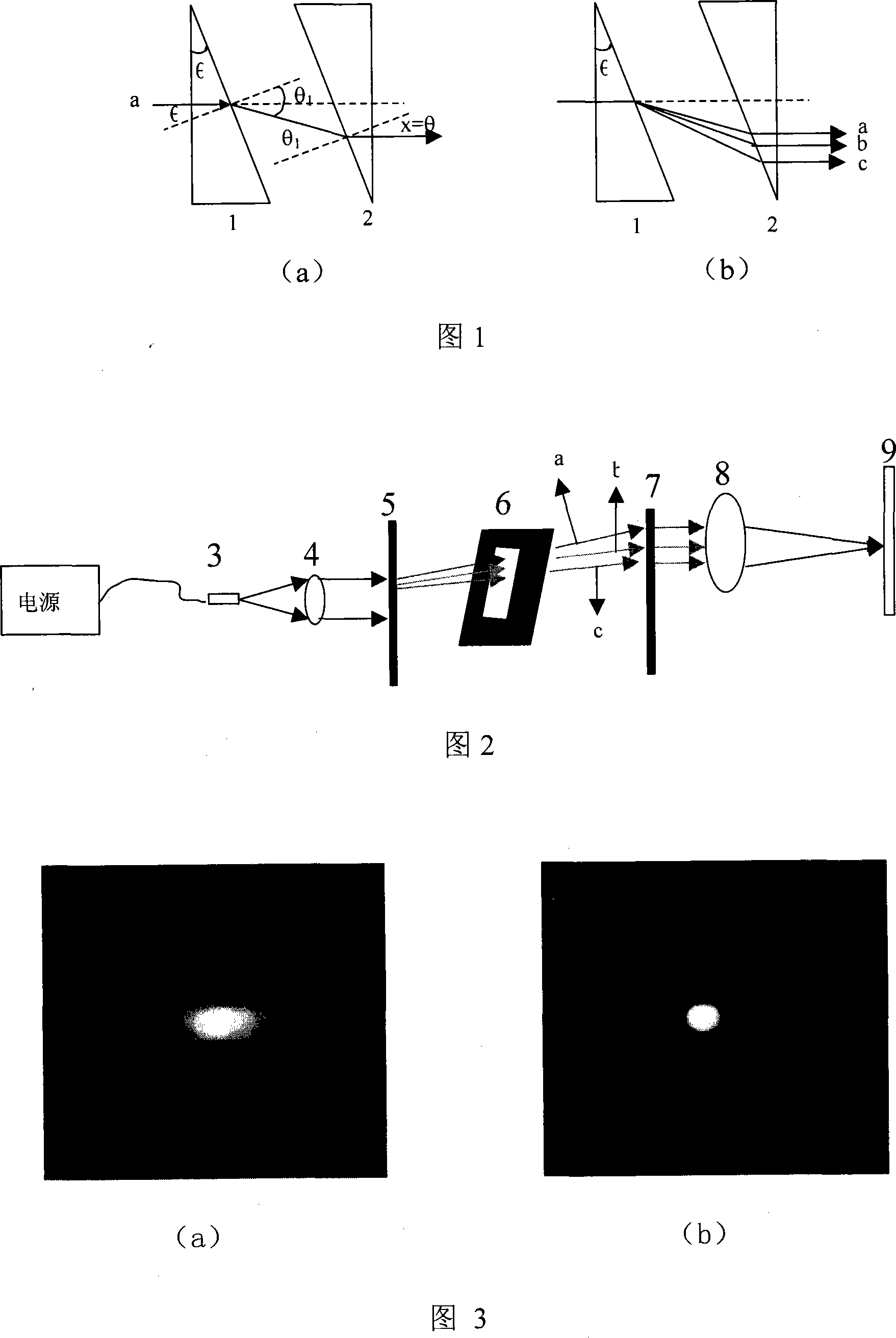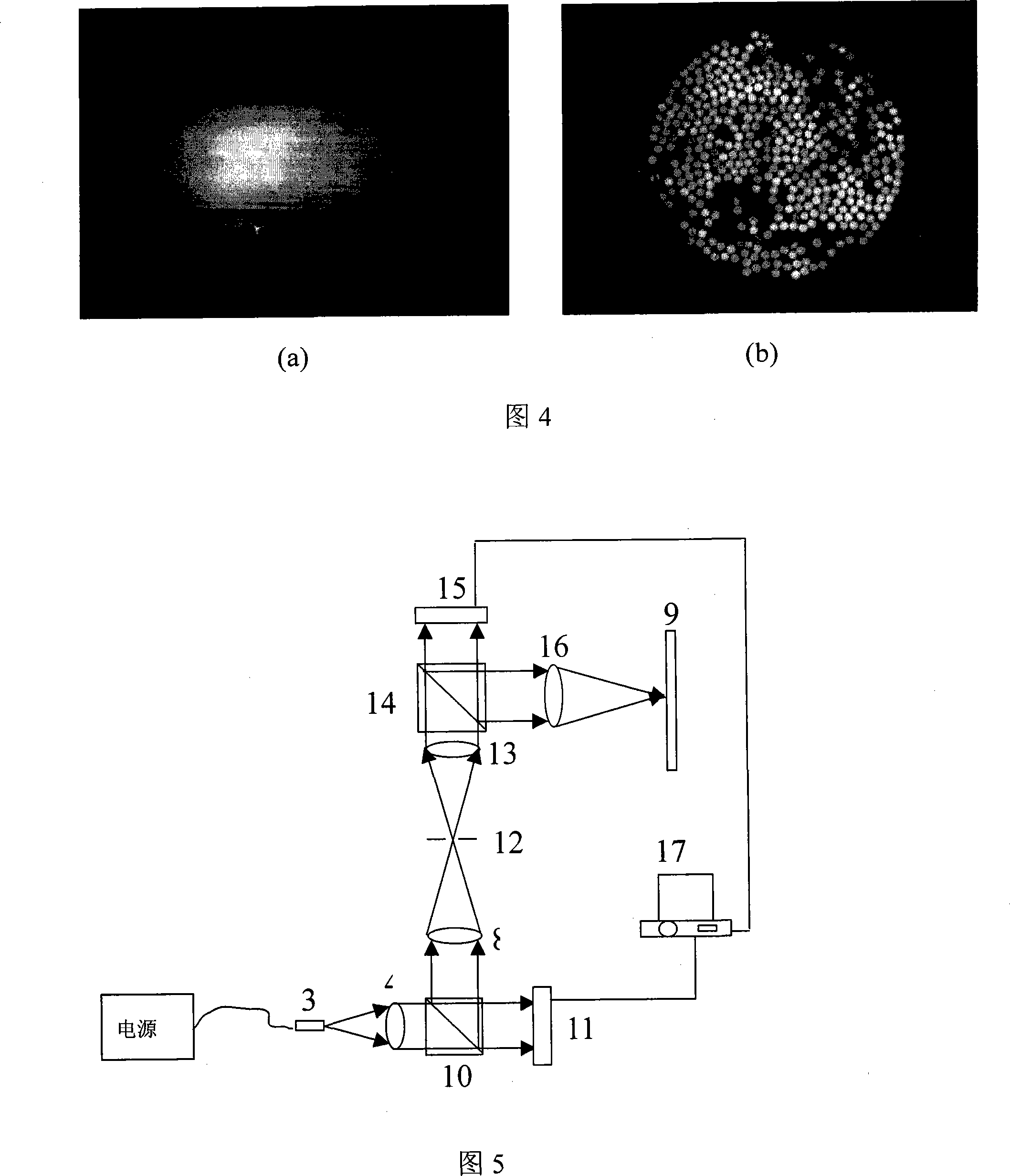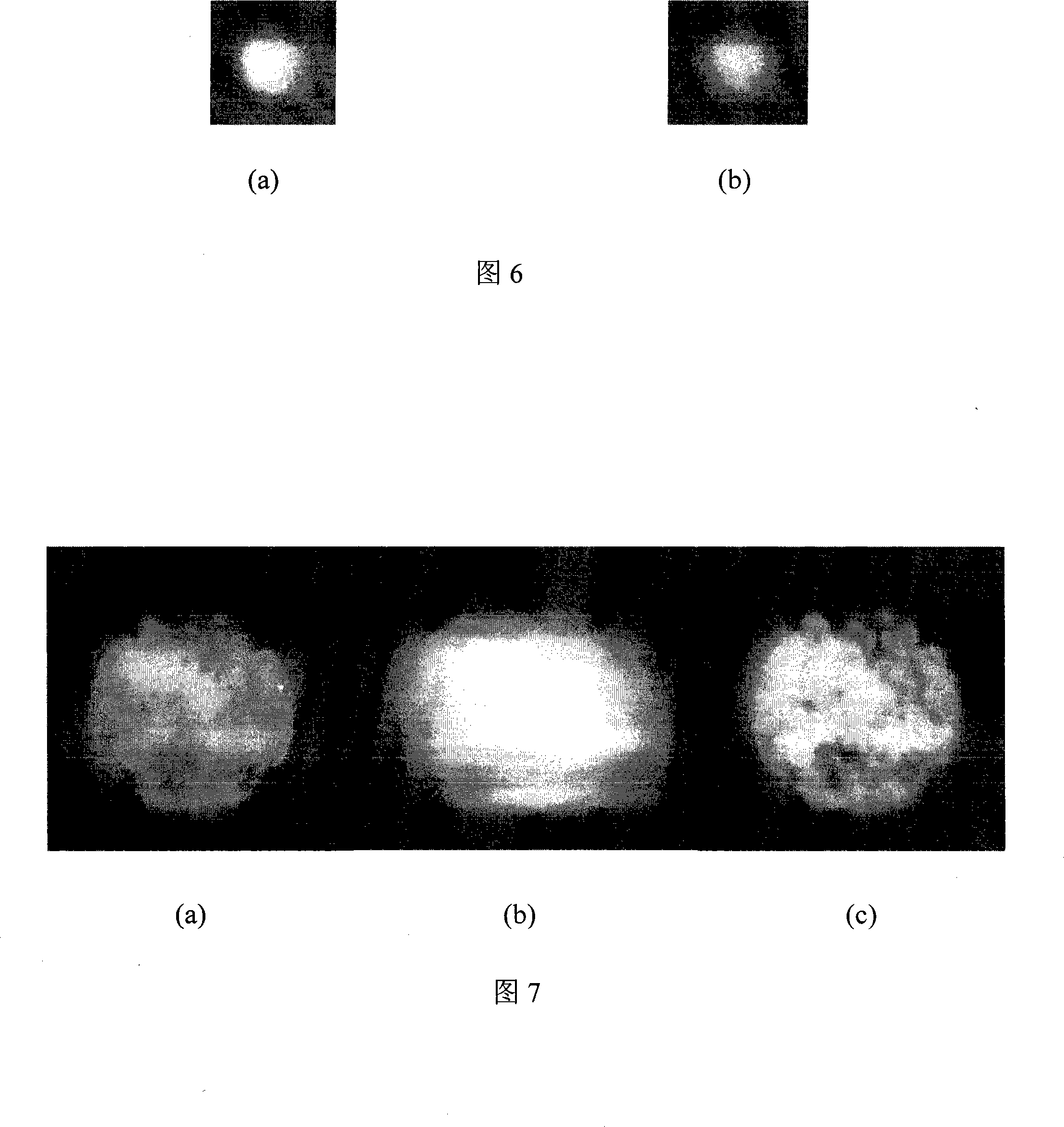Method for eliminating color difference of twisting type liquid crystal wave-front corrector
A wavefront corrector and liquid crystal correction technology, applied in the field of adaptive optics, can solve the problems of high cost and complicated production
- Summary
- Abstract
- Description
- Claims
- Application Information
AI Technical Summary
Problems solved by technology
Method used
Image
Examples
specific Embodiment approach 1
[0024] The optical path structure of Embodiment 1 of the present invention is as shown in Figure 2: by fiber bundle light source 3, first lens 4, first blazed grating 5, pinhole filter 6, second blazed grating 7, second lens 8 and receiving Screen 9 constitutes. The optical fiber bundle light source 3 is placed at the focus position of the first lens 4, so that the light passing through the first lens 4 becomes parallel light; the parallel light beam passes through the first blazed grating 5 to generate dispersion, and the pinhole filter 6 filters out stray light, Then through the second blazed grating 7 opposite to the first blazed grating 5 , the dispersed light is corrected into parallel light; the parallel light is incident on the second lens 8 and is converged and imaged on the receiving screen 9 . The lenses used in the system are all achromatic lenses.
specific Embodiment approach
[0025] In order to further understand the first embodiment of the present invention, the parameters and implementation process of each element in the first embodiment are described in detail below:
[0026] 1) The optical fiber bundle light source 3 is a white light, that is, a visible light source, with a light output diameter of 1 mm and a diameter of each optical fiber of 25 μm.
[0027] 2) The parameters of the first lens 4 and the second lens 8 are the same, both have an aperture of 20mm and a focal length of 300mm.
[0028] 3) The pinhole filter 6 is a square hole filter with tunable light output area, which filters out, that is, only allows the first-order diffracted light of the first blazed grating 5 to pass through.
[0029] 4) The first blazed grating 5 and the second blazed grating 7 have the same parameters, are transmission type, and are blazed gratings composed of isosceles triangles with 100 lines / mm.
[0030] 5) The receiving screen 9 is hard white paper for ...
specific Embodiment approach 2
[0036] The optical path structure of the second embodiment of the present invention is as shown in Figure 5: by the fiber bundle light source 3, the first lens 4, the second lens 8, the receiving screen 9, the first beam splitter 10, the first liquid crystal screen 11, the aperture A filter 12, a third lens 13, a second beam splitter 14, a second liquid crystal screen 15, a fourth lens 16 and a computer 17 are composed. The optical fiber bundle light source 3 is placed at the focus position of the first lens 4, so that the light passing through the first lens 4 becomes parallel light; the parallel light beam is incident on the first liquid crystal screen 11 through the beam splitter 10, and the kinoform method is used to generate On the liquid crystal screen 11, a blazed grating is applied by a computer 17 to generate dispersion, and the dispersed reflected light is reflected to the second lens 8 by the beam splitter, and then the first-order diffracted light is filtered out by...
PUM
 Login to View More
Login to View More Abstract
Description
Claims
Application Information
 Login to View More
Login to View More - R&D
- Intellectual Property
- Life Sciences
- Materials
- Tech Scout
- Unparalleled Data Quality
- Higher Quality Content
- 60% Fewer Hallucinations
Browse by: Latest US Patents, China's latest patents, Technical Efficacy Thesaurus, Application Domain, Technology Topic, Popular Technical Reports.
© 2025 PatSnap. All rights reserved.Legal|Privacy policy|Modern Slavery Act Transparency Statement|Sitemap|About US| Contact US: help@patsnap.com



